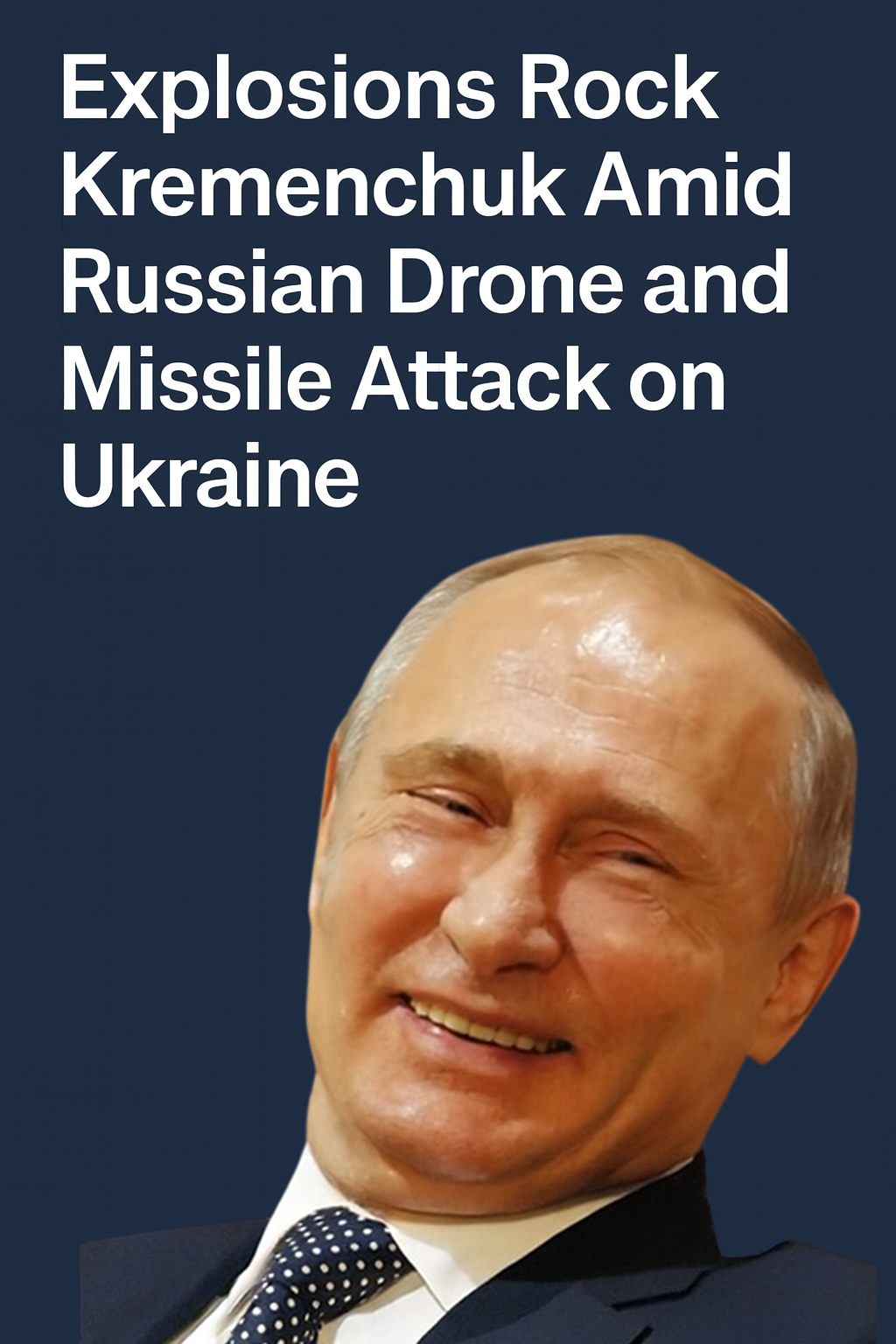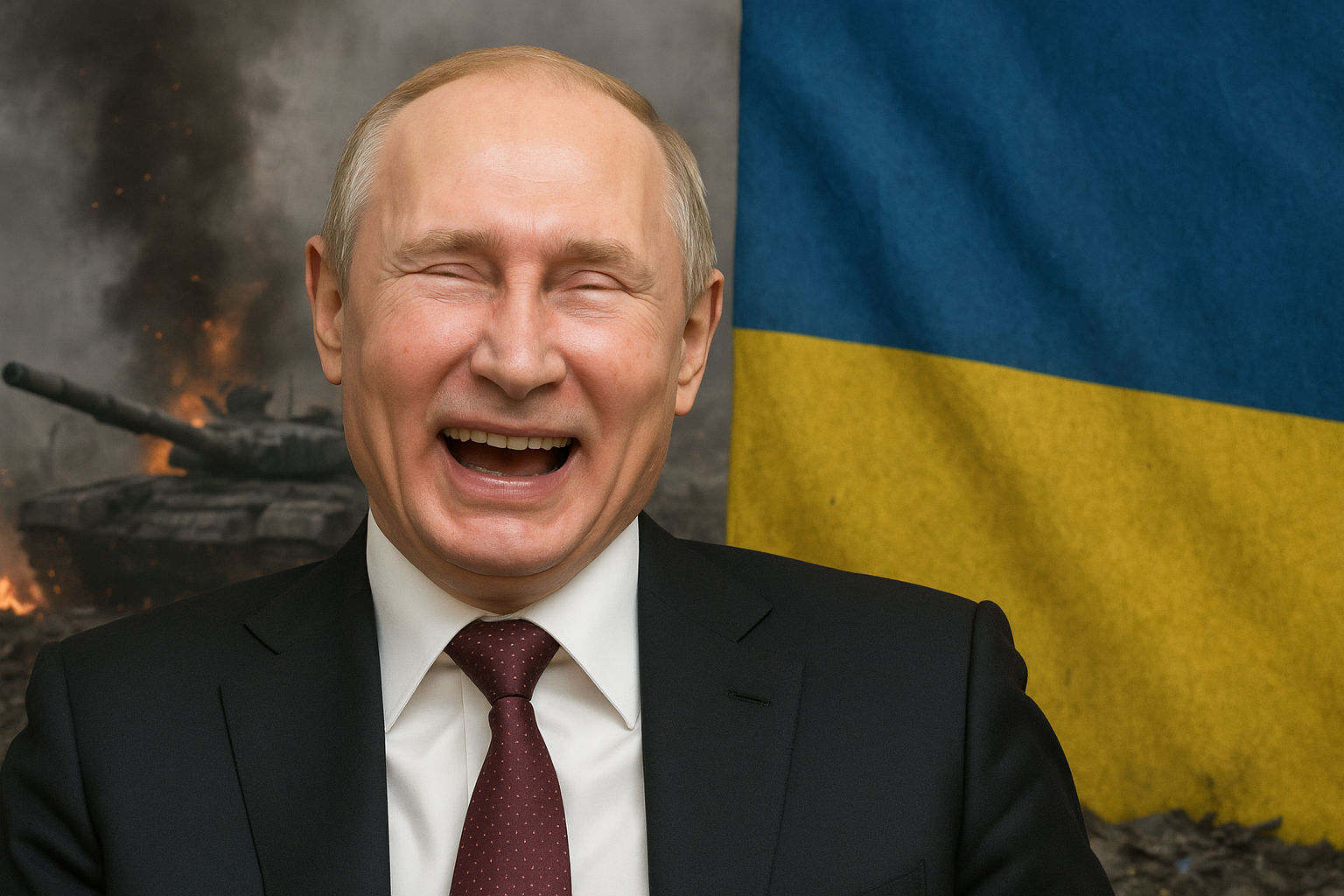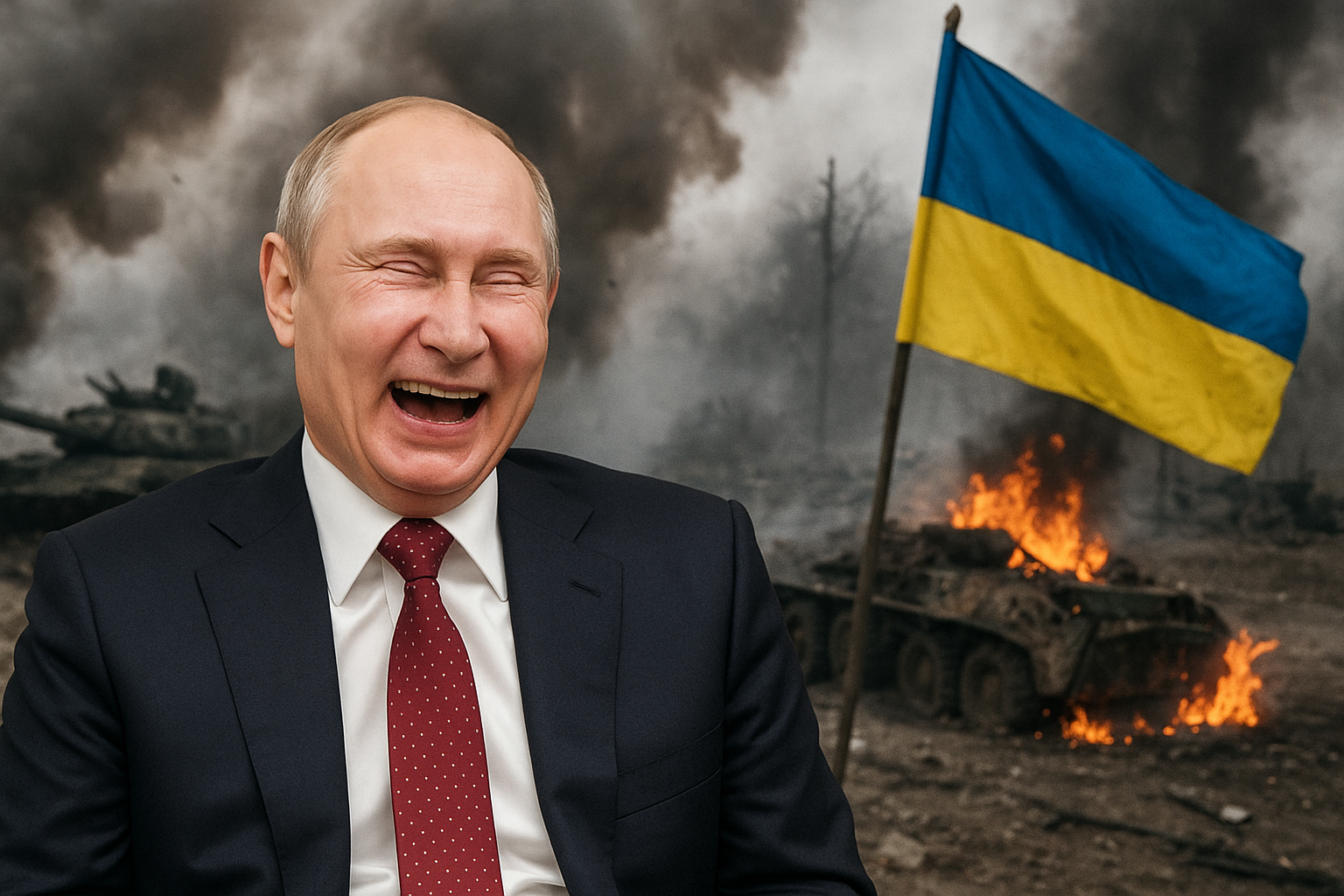Putin bombing Kremenchuk!
Unlike frontline towns in Donbas or Zaporizhzhia, Kremenchuk is deep in central Ukraine. Strikes here demonstrate Moscow’s ability to reach far beyond active battle zones, keeping the entire nation under threat.-Rafael Benavente

Rafael Benavente
1. What Happened in Kremenchuk?
The Night of the Attack
- Ukrainian officials confirmed explosions in Kremenchuk after air defense systems engaged incoming threats.
- Preliminary reports suggest a mix of Shahed-136/131 drones (Iranian-made and used extensively by Russia) and Kalibr cruise missiles were deployed.
- Casualty figures remain unconfirmed, but infrastructure damage was reported, including possible strikes near energy facilities.
The strike was part of a wider pattern: Russia frequently uses nighttime barrages, when visibility is lower, to stress Ukrainian defenses.

Why It Matters
Unlike frontline towns in Donbas or Zaporizhzhia, Kremenchuk is deep in central Ukraine. Strikes here demonstrate Moscow’s ability to reach far beyond active battle zones, keeping the entire nation under threat.
2. Kremenchuk’s Strategic Importance
Industrial & Energy Hub
Kremenchuk, in Poltava Oblast, has long been known for its oil refinery—one of Ukraine’s largest before the war. Though damaged in previous strikes, its location still makes the city a target whenever Russia seeks to cripple fuel supplies.
Transportation Arteries
The city sits on the Dnipro River, with bridges and rail lines that connect central Ukraine to key military supply routes. Disrupting logistics here could complicate Ukrainian troop and equipment movement.
Symbolic Target
Beyond infrastructure, striking a major city in central Ukraine carries psychological weight. It reminds Ukrainians that nowhere is fully safe, even hundreds of kilometers from the front.
3. Russia’s Drone-and-Missile Playbook
Since late 2022, Russia has refined a hybrid strike method:
- Shahed drones: cheap, relatively slow, used to swarm defenses and force Ukraine to expend costly interceptors.
- Cruise missiles: faster, more destructive, often launched in tandem with drones to overwhelm radar coverage.
- Saturation waves: Russia launches dozens of drones at once, often from multiple directions, to dilute interception rates.
The Kremenchuk attack fits this template. Reports indicate drones flew in from the south, while missiles followed a different path, complicating interception.
4. Ukraine’s Air Defense: Strengths and Strains
Successes
Ukraine’s Western-provided systems have been remarkably effective:
- Patriot systems have intercepted high-value targets, including Kinzhal hypersonic missiles.
- NASAMS and IRIS-T batteries protect key urban centers.
- Mobile anti-air teams with machine guns and MANPADS track Shahed drones at low altitude.
Ongoing Struggles
- Resource depletion: Intercepting a $20,000 Shahed drone often requires a $1–2 million missile. This imbalance strains Ukrainian stockpiles.
- Coverage gaps: Ukraine’s vast territory means not all cities can be protected at once.
- Political delays: U.S. and EU funding packages have faced gridlock, leaving Kyiv uncertain about long-term resupply.
Kremenchuk’s experience illustrates this reality: while many incoming threats were intercepted, some still penetrated defenses.
5. Civilian Impact
Every attack is measured not just in military effect but in human cost:
- Psychological toll: Nights filled with sirens and booms erode mental health.
- Displacement: Families in at-risk regions often leave for safer areas, contributing to Ukraine’s ongoing demographic crisis.
- Infrastructure strain: Repeated hits on power and fuel facilities increase blackouts, slowing reconstruction and industry.
In Kremenchuk, residents described the eerie routine: hearing drones buzzing overhead, waiting for the thunder of interceptions, and praying debris wouldn’t fall on their homes.
6. International Reactions
Western Allies
- European leaders condemned the attack, reiterating support for Ukraine’s air defenses.
- NATO officials highlighted the need for sustained military aid, warning that Russia is banking on Western fatigue.
Russia’s Position
Moscow maintains its line that such strikes target “military and energy infrastructure,” though repeated civilian casualties undermine this claim internationally.
Global South
Nations in Africa, Asia, and Latin America continue to watch closely. Many remain neutral, but repeated high-profile strikes complicate Russia’s efforts to portray itself as a victim of NATO aggression.
7. A Pattern of Attacks on Kremenchuk
This is not the first time Kremenchuk has suffered.
- June 2022: A Russian missile strike hit a shopping mall, killing more than 20 civilians—a moment that shocked global audiences.
- 2023–2024: Multiple waves of drone strikes targeted the oil refinery and nearby infrastructure.
- 2025: The most recent attack again underscores the city’s vulnerability.
Each new strike adds to a narrative: Russia views Kremenchuk as both a strategic node and a symbolic reminder of Ukraine’s fragility.
8. What Comes Next?
For Ukraine
- Continued push for more air defense systems and fighter jets (F-16s expected to be deployed by late 2025).
- Growing focus on domestic drone production to counter Russia symmetrically.
For Russia
- Likely continuation of hybrid barrages—cheap drones plus precision missiles.
- Efforts to source more drones from Iran or produce domestically.
For the World
- Pressure will mount on Western governments: either commit to long-term Ukrainian defense, or risk Russia grinding down Ukraine’s infrastructure and morale.

Conclusion
The explosions in Kremenchuk are more than just another headline in a long war. They encapsulate the brutal logic of Russia’s strategy—to stretch Ukraine’s defenses thin, damage its economy, and erode civilian resilience.
For Ukraine, defending cities like Kremenchuk requires not just courage but sustained external support. For Russia, these attacks are about signaling endurance. And for the global community, they pose a stark question: how much longer will the world let the skies of Ukraine be filled with drones and missiles before a decisive shift occurs?
